

James Wong
2025 Mazda CX-5 G25 Touring AWD review
5 Days Ago
The XC90 is far from the newest kid on the family SUV block, but it still has plenty to offer if you want to haul kids around in luxury.
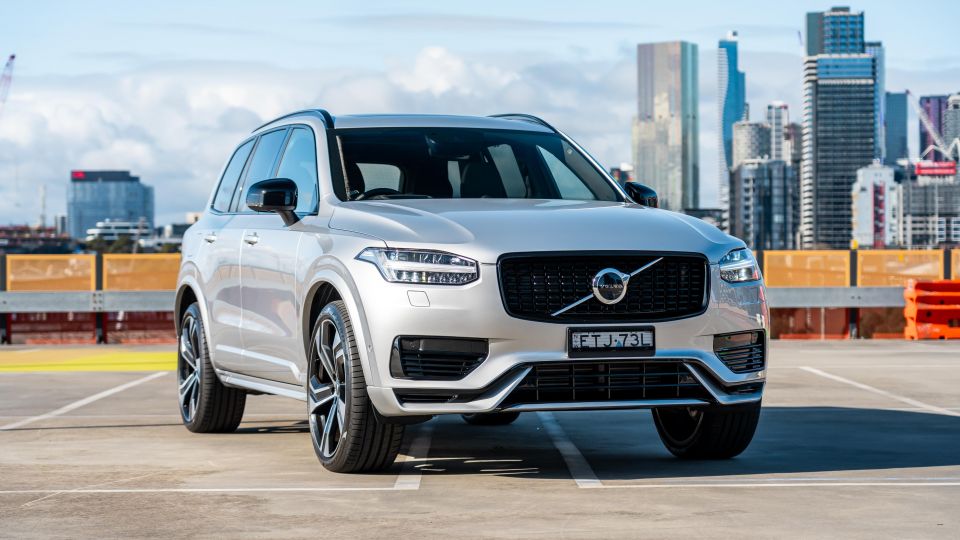
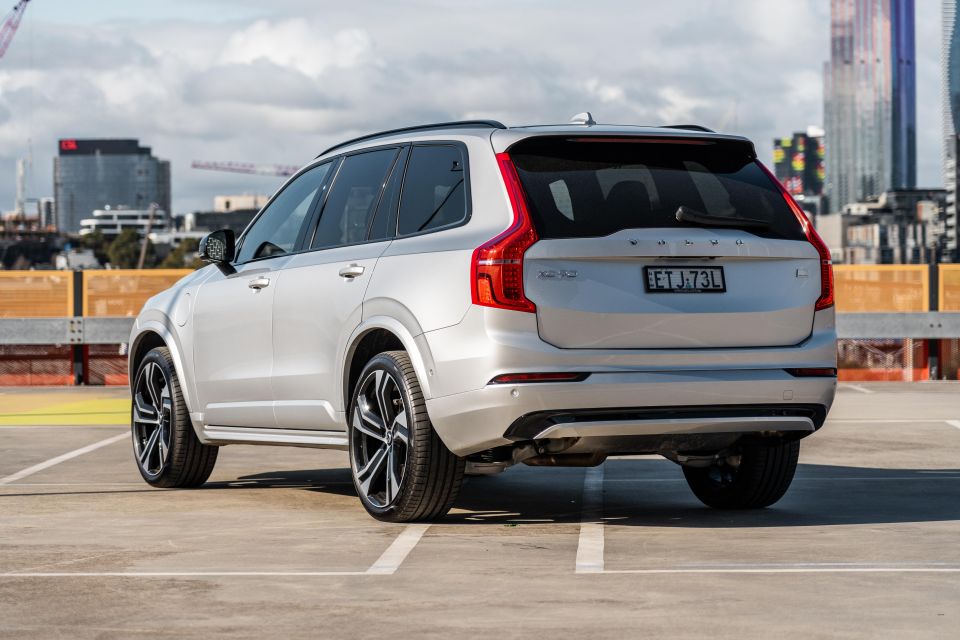

Quickly see how this car stacks up against its competition. Select any benchmark to see more details.
Where expert car reviews meet expert car buying – CarExpert gives you trusted advice, personalised service and real savings on your next new car.
The Volvo XC90 is royalty in the world of large SUVs.
The first-generation car lived for 14 years and built a reputation as a rock-solid way to haul a family in comfort, and the current model has been building on that reputation since 2016.
At six years old, with an electric successor waiting in the wings, you could be fooled into thinking the current XC90 is on its last legs. As it turns out, that isn’t the case.

The XC90 T8 Recharge Plug-in Hybrid on test here has recently been treated to a bigger battery and more powerful electric motor, and will be given a mild update with new trims and a new Google-based infotainment system late in 2022 or early in 2023.
When the electric EX90 arrives, the current XC90 is expected to hang around alongside it so those who still fancy internal-combustion have an option from Volvo. Despite its age, this seven-seater will need to take the fight to the BMW X5 and Audi Q7 for some time yet.
How does the range-topping plug-in hybrid stack up?
Pricing for the XC90 T8 Recharge PHEV on test here kicks off at $118,990 before on-road costs, but prices have changed for 2023.
Although the current model is in stock at dealers, anyone who orders a new XC90 now will get the 2023 model detailed in this price and spec story.
Pricing kicks off at $121,990 before on-roads for the Ultimate T8 Recharge Plug-in Hybrid range-topper, which now offers the option of wool blend upholstery in place of standard leather. It also gains the Ultimate badge, which is new to the XC90.
At that price, the XC90 PHEV goes head-to-head with the BMW X5 xDrive30d (the PHEV is $139,900), and sits between the Mercedes-Benz GLE300d and 400d.
Over at Audi, which offers a similarly spacious seven-seat interior in its Q7, the XC90 T8 Recharge PHEV bisects the 45 TDI and 50 TDI.

The XC90 debuted the interior design language that’s now filtered through the whole Volvo range.
It’s a beautiful space, pairing an undeniably Scandinavian look with the feeling of bank vault quality we’ve come to expect from the likes of Audi. Even at six years old, everything you touch feels high quality and looks sharp.
Volvo makes some of the nicest seats in production today. They wouldn’t look out of place at an art gallery, and blend solid bolsters with long-haul comfort to die for.
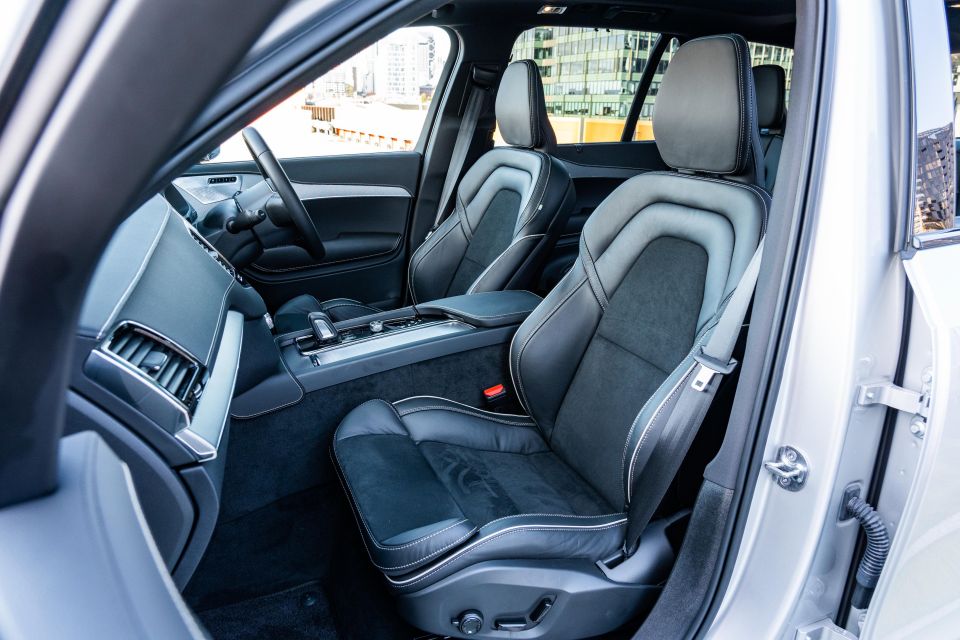
Particularly impressive is the extendable under-thigh support, which stretches further than I’ve experienced on anything else.
There’s plenty of adjustment on hand, allowing tall and short drivers to get comfortable behind wheel of what’s a big bus in the city.
The updated XC90 due at the end of 2022 will feature a newer infotainment system built using Android Automotive software from Google; our tester was running the last iteration of what Volvo calls Sensus.

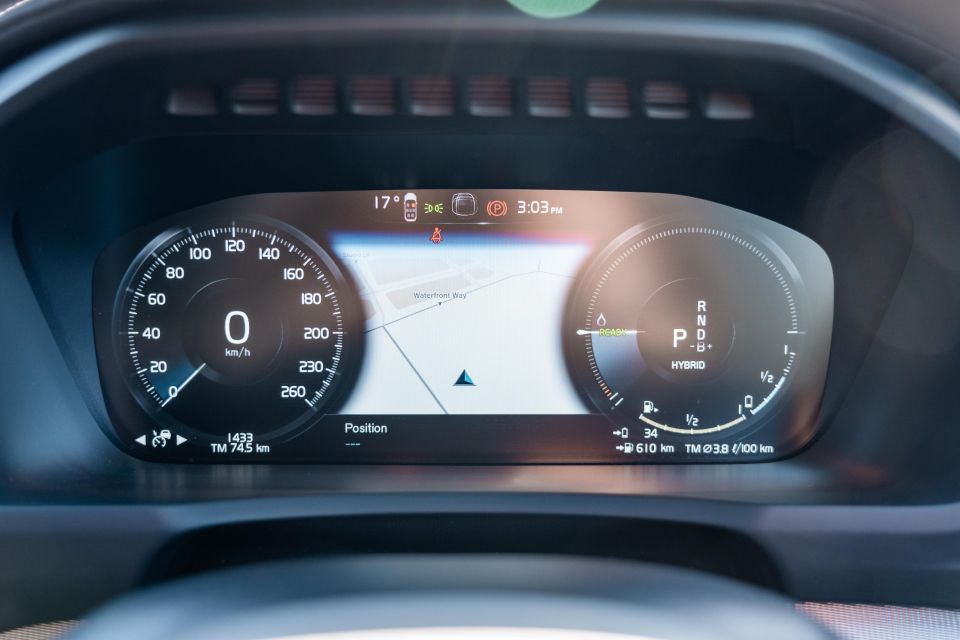
It’s built around tiles which expand and shrink based on what you’re using at a particular time, and manages to get away with lacking physical climate controls by anchoring a shortcut for your temperature, seat heaters, and climate control at the base of the display.
Apple CarPlay worked seamlessly, as did Bluetooth connectivity, and the range of swipes, pokes, and prods required to navigate are met with reasonably snappy responses and smooth graphics. The fact Volvo has made its Android system look like Sensus is testament to the fact it was ahead of its time, but a bit more processing power and a tidy-up will be welcome.
What doesn’t need to be updated is the Bowers & Wilkins sound system, which is exceptional. With punchy bass and crystal clear sound at the top end, it’s a winner.
The digital instruments are clear and easy to read, but lack the customisation options you get from the Volkswagen Group’s exceptional Virtual Cockpit. Even the updated take that features elsewhere in the Volvo range feels a bit short on options.

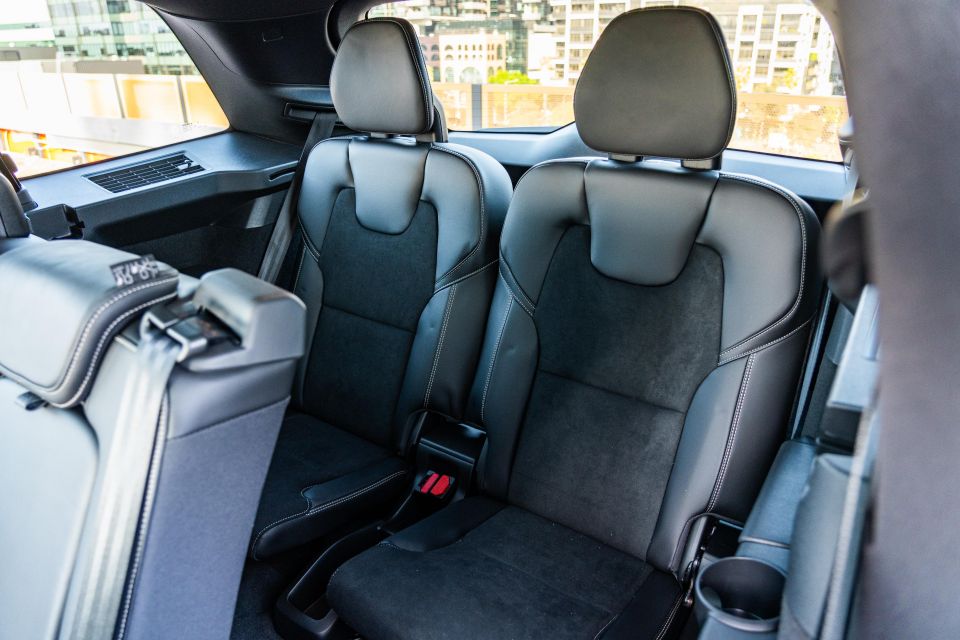
Down back, the XC90 does nothing to tarnish the reputation for practicality established by the original.
With the rear bench in its rearmost position there’s acres of foot, knee, and headroom, and the car’s broad body means you’ll fit three across the back without too much clashing of elbows.
With that said, the central seat is a bit tight compared to the sculpted outer pews. It also houses Volvo’s pop-up booster seat, while the outboard seats feature ISOFIX anchor points.
Quad-zone climate control means the second row can pick its own temperature, too. Oversized windows and the panoramic sunroof feed plenty of light into the rear seats, which should help keep carsickness at bay on long trips.
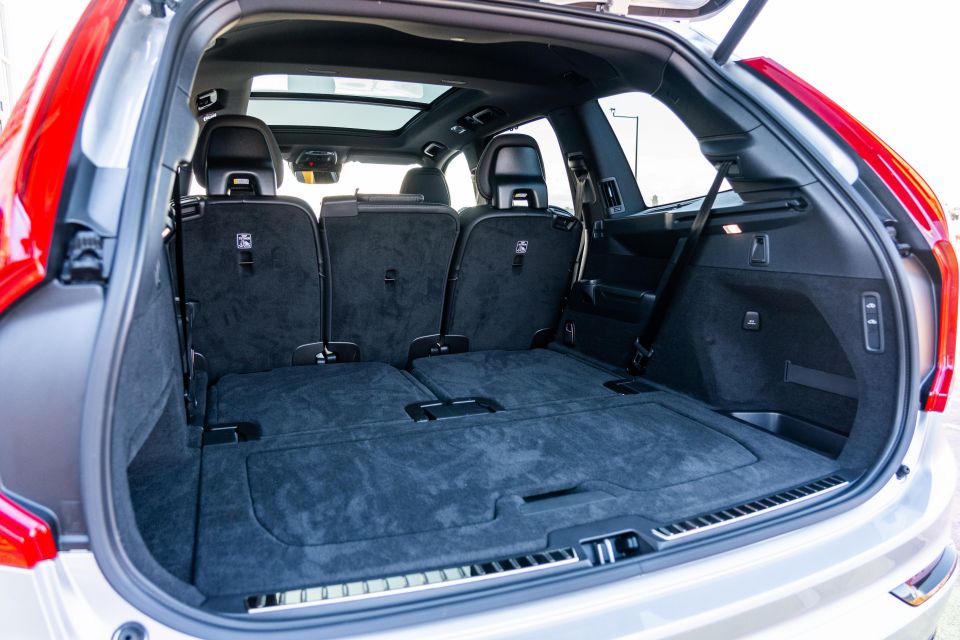
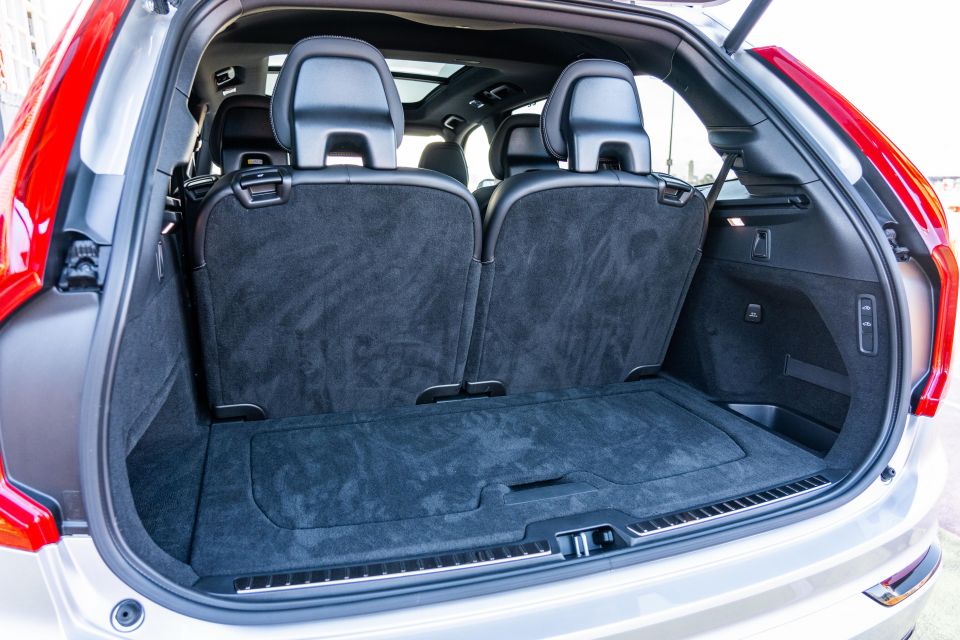
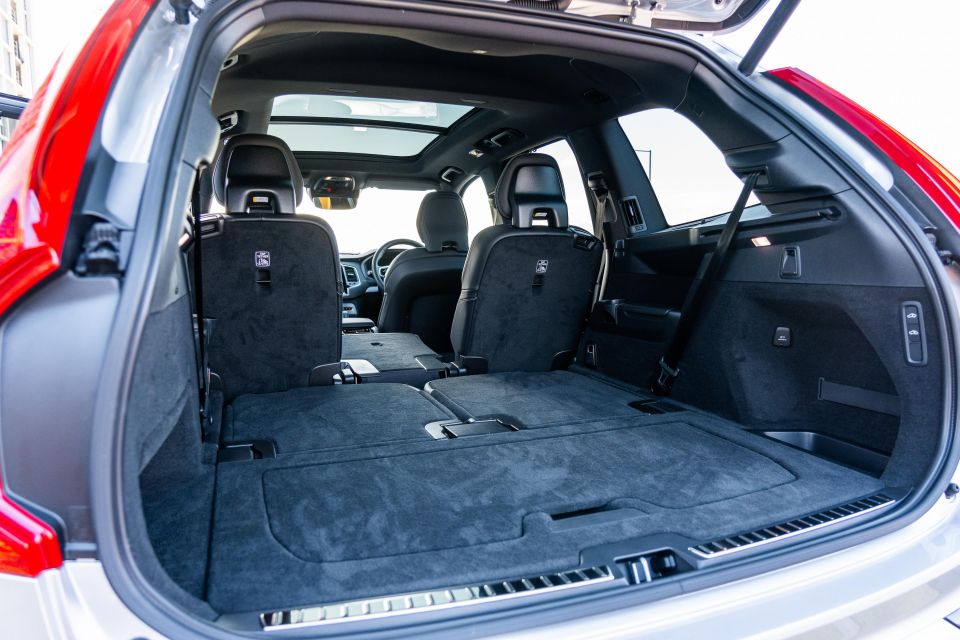

The third row isn’t quite as accomodating. Folding the seats requires a bit more lever-pulling than some of its rivals, and if you don’t have long arms the layout necessitates more stretching than is ideal.
Legroom back there is acceptable, if not exceptional – they’re more than capable of housing kids and teenagers for shorter journeys, but adults won’t want to be crammed back there for too long. There are air vents for the third row, which is a touch that will win favour on a hot Australian summer’s day.
Claimed boot space is 356 litres with the third row in place, or 610L with them folded. There’s a positively capacious 1868L on offer with the second row folded flat.
The boot door is powered and opens nice and high, meaning taller drivers won’t bash their heads – although you need a bit of space behind you in underground carparks to safely get it open.

Power in the T8 Recharge comes from a 2.0-litre turbocharged petrol engine mated with a rear-mounted electric motor and lithium-ion battery.
The petrol engine makes 233kW of power and 400Nm of torque, while the e-motor makes 107kW and 309Nm. Combined, Volvo claims the XC90 puts out 340kW and 709Nm, and the 100km/h sprint takes a claimed 5.3 seconds.
Power is put to the road through an eight-speed automatic transmission, and the XC90 has all-wheel drive. The petrol engine powers the front axle, while the e-motor kicks in at the rear axle.
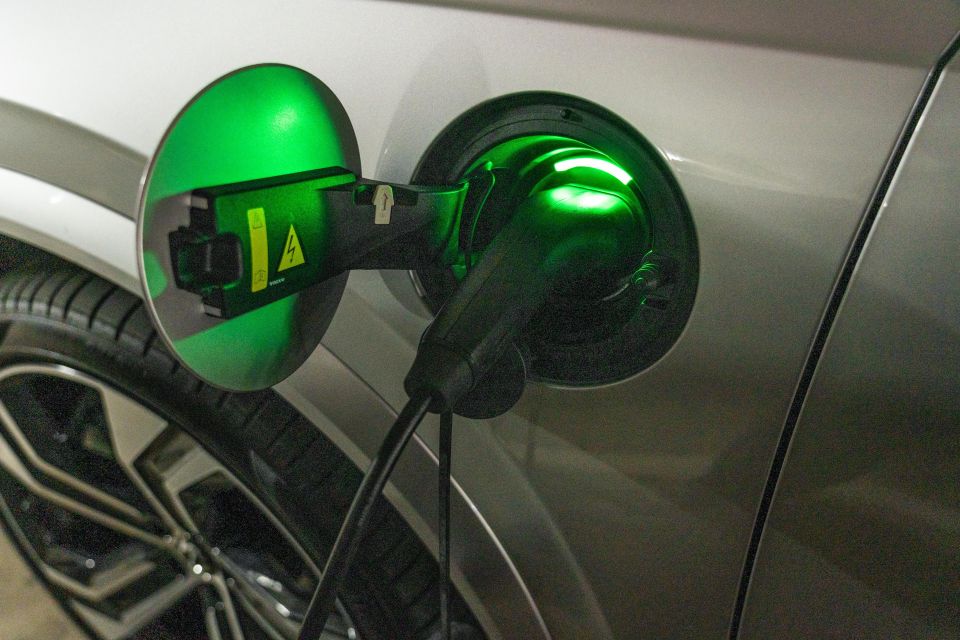
Claimed fuel economy is 1.8 litres per 100km, but that’s contingent on having a full charge in the 18.8kWh battery pack. Volvo says you’ll get 77km on a full charge from the battery.
Actual mileage varies based on how you’re driving. With a full battery it’s possible to hit or beat that 1.8L/100km claim – we consistently saw 0.8L/100km around town.
Without charge in the lithium-ion battery, the XC90 feels more like a Toyota-style hybrid. Its fuel economy rapidly blows out to around the 7.0 or 8.0L/100km mark, which is still acceptable for a big family SUV… but not really what you’d hope for from a car with an overt environmental focus.
The car has a 71-litre fuel tank, and drinks premium unleaded.
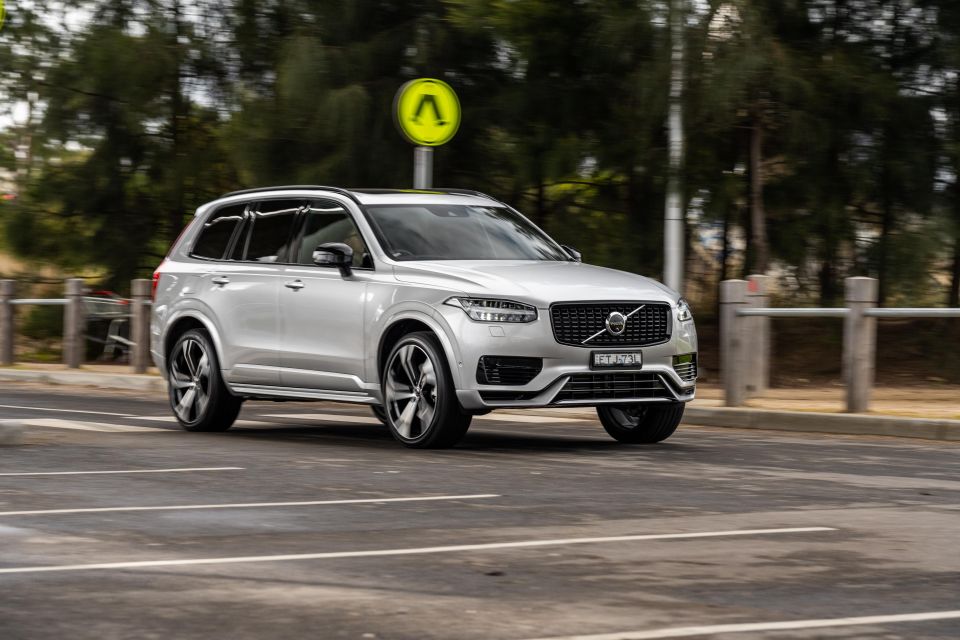
The XC90 was already a polished plug-in hybrid, but the latest update has improved it further.
With charge in the lithium-ion battery pack it does an impressive impression of an electric vehicle. It’s smooth and quiet, with ample punch under your right foot to squirt into gaps in traffic without bringing the petrol engine into play.
Even in its default Hybrid drive mode you rarely rouse the petrol engine from its slumber, all the way up to 80 or 100km/h. Volvo’s brake regeneration is gentle in Drive, and stronger in B mode, but you’ll need to use the brake pedal regardless of how your car is set up.
Noise suppression is impressive at any speed, regardless of which power source is chipping in. With the e-motor in charge there’s very little in the way of roar from the tyres or wind noise from the mirrors, and the petrol engine rarely raises its voice above a murmur when you’re cruising.
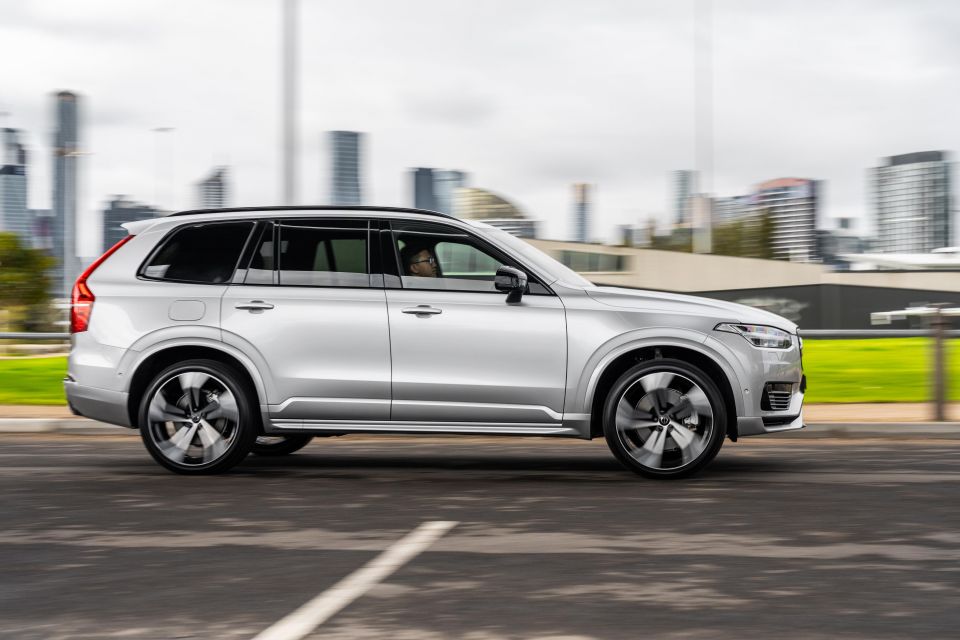
It’s not perfectly seamless, though. Bury your right foot in EV mode and the petrol engine will spring to life before there’s a pause, the transmission sorts it all out, and then the engine sends a shock of torque to the wheels.
If you aren’t careful it can make the XC90 surge awkwardly forward when all you wanted was a quick squirt.
You can also make it shout when you really push. Ask for sustained acceleration from the petrol and you get a bit of vibration through the steering wheel, and a bit more noise than is ideal.
It feels a bit small heart/big car – which is not uncommon in full-sized crossovers powered by 2.0-litre engines.
There’s no question it’s fast, though. Volvo claims the 100km/h sprint takes a hot-hatch-bothering 5.3 seconds, and with both power sources humming there’s no doubt it feels every bit that quick.
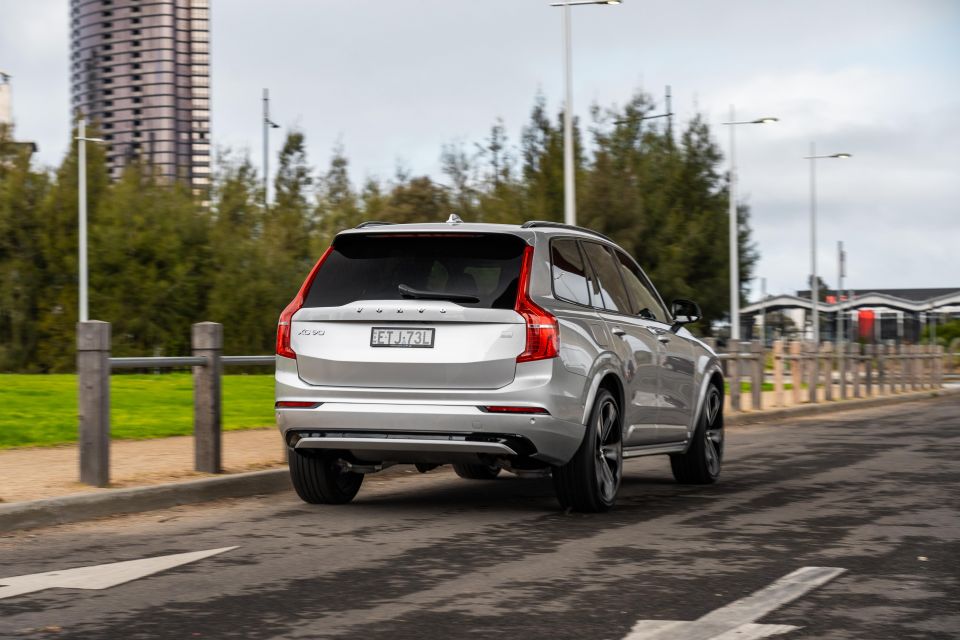
Beyond the clever PHEV powertrain, the XC90 is a lovely thing to drive. The ride quality on 22-inch wheels and air suspension is nothing short of impressive, ironing out the worst Melbourne’s average urban roads could throw at it, while body control is excellent over highway crests and dips.
The big, upright windows and square shoulders make it an easy car to place in tight spots, and the slow-ish steering is light enough that anyone can park it at low speed. The steering is fluid off centre, and is nicely tuned to make you feel in control at highway speeds.
Coupled with Volvo’s excellent driver assists, from the confident lane-keeping to the smooth-moving adaptive cruise, the lovely ride and smart steering make the XC90 a lovely place to settle in on long road trips.
Rather than chasing outright sportiness, Volvo has tuned the XC90 to feel like a big, relaxed family car. We wish a few rivals would take a leaf out of its book.
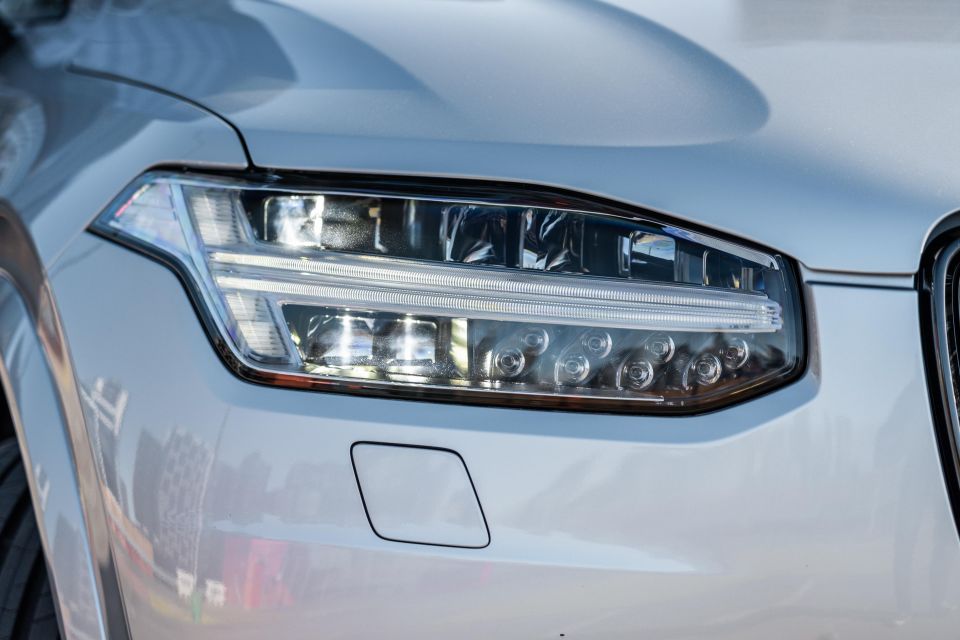

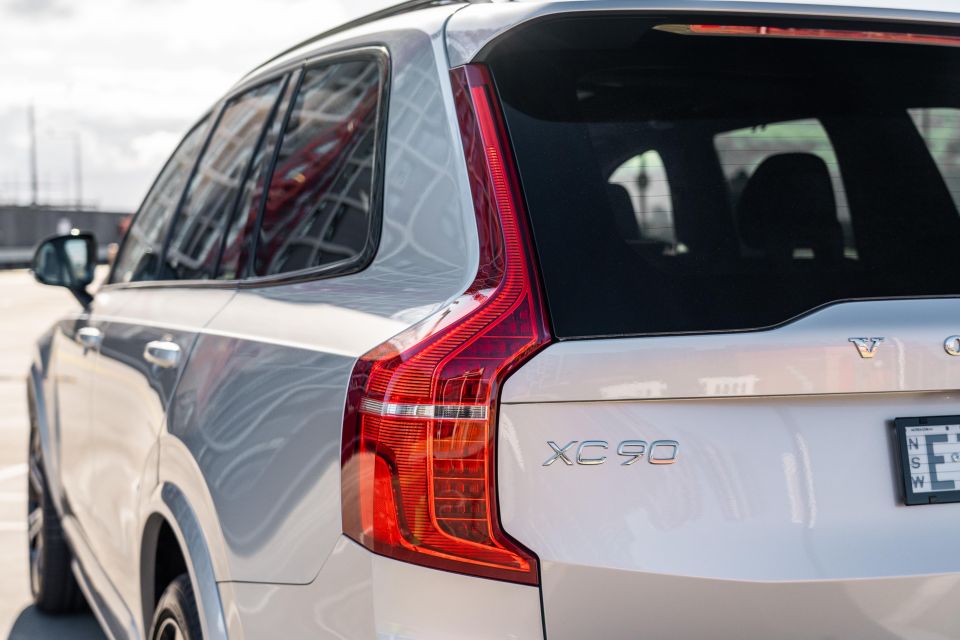

The XC90 on test here is a 2022 model, which has the following specifications. There are still 2022 models available, but new orders will be for the updated 2023 car.
We’ve detailed the newest (2023) specifications below, complete with information about what has changed relative to the 2022 model on test.
XC90 Plus B5 highlights:
XC90 Ultimate B6 Bright adds:
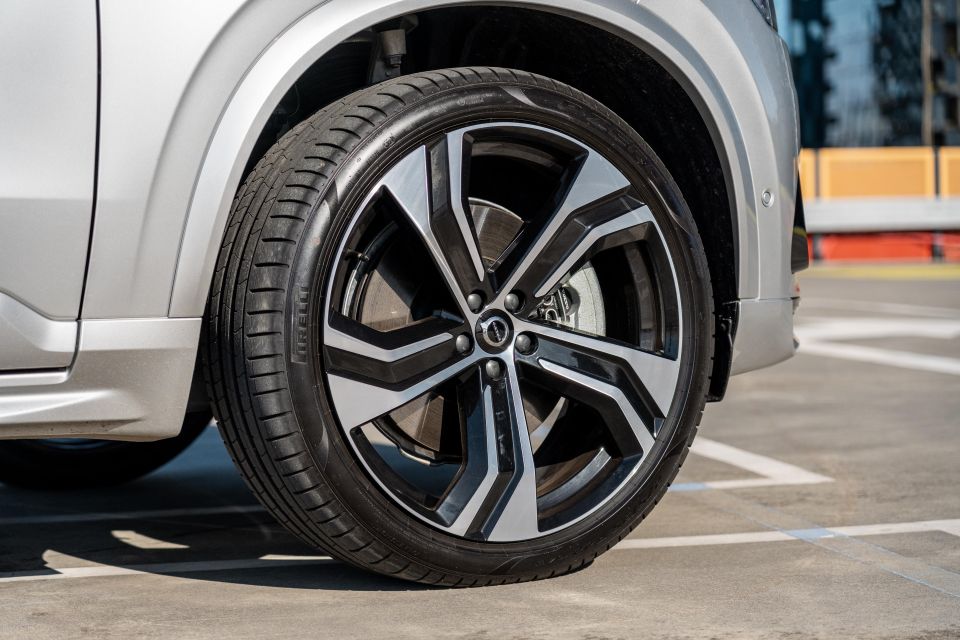
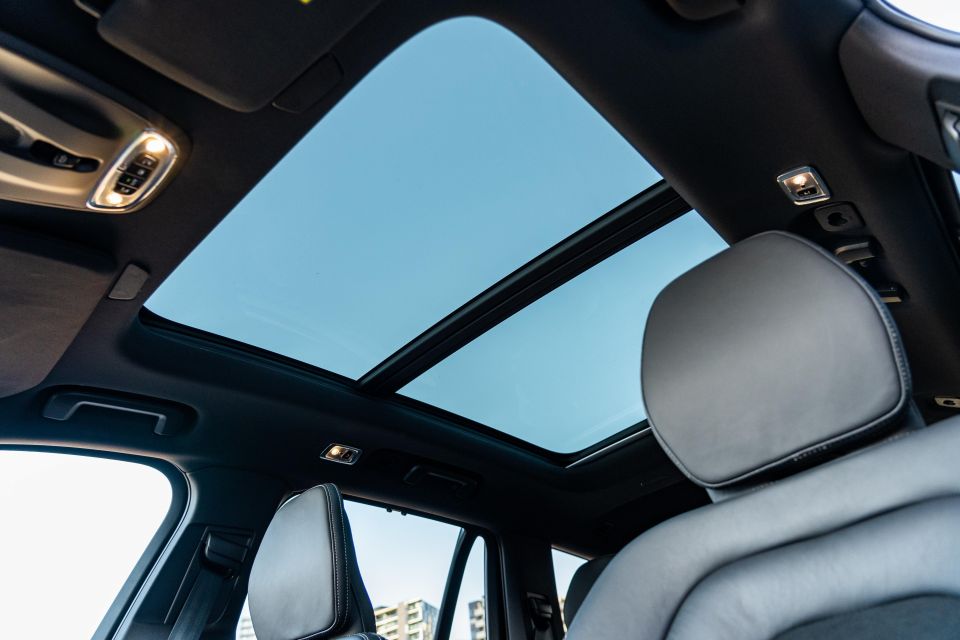
Where expert car reviews meet expert car buying – CarExpert gives you trusted advice, personalised service and real savings on your next new car.
XC90 Ultimate B6 Dark adds:
XC90 Ultimate T8 Recharge Plug-in Hybrid adds:
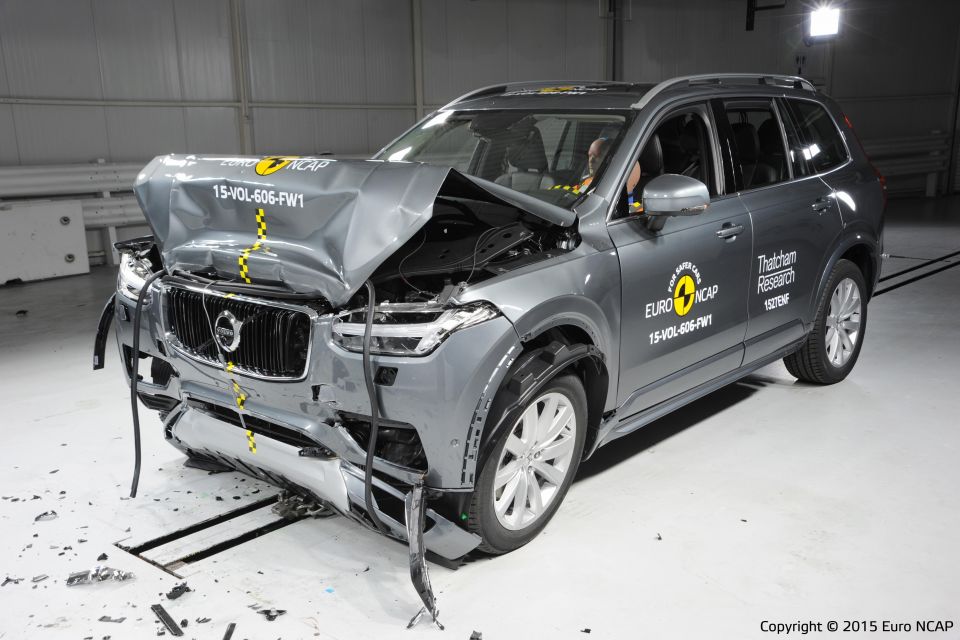
The current-generation Volvo XC90 wears a five-star ANCAP safety rating, but only for diesel models sold between September 2015 and January 2022 – so the latest range is therefore unrated.
ANCAP’s safety rating was based on 2015 Euro NCAP testing, which is now expired under Euro NCAP’s new seven-year validity policy.
It scored 97 per cent for adult occupant protection, 87 per cent for child occupant protection, 72 per cent for pedestrian protection, and 73 per cent for safety assist.
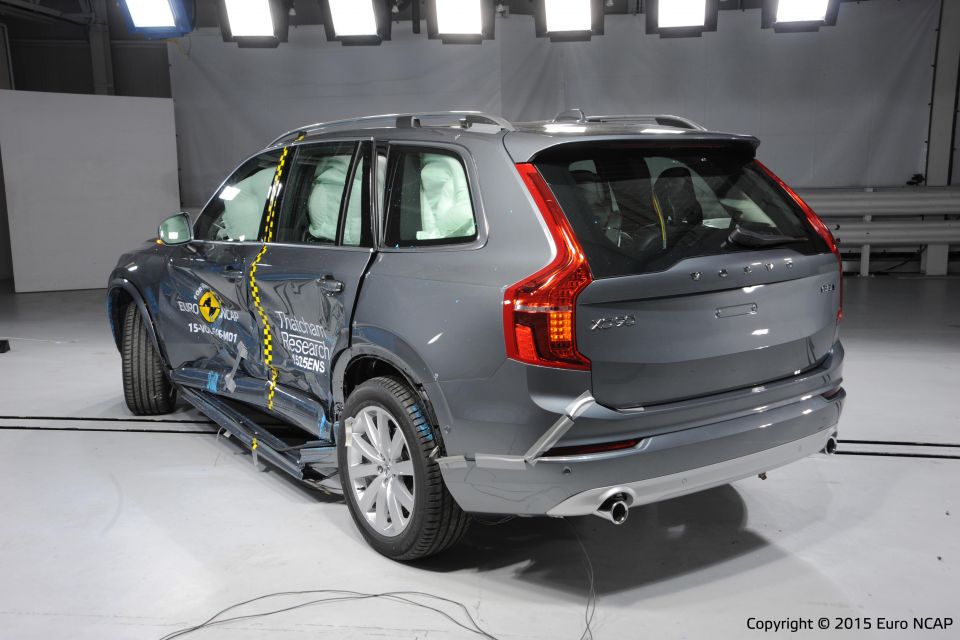
Standard safety features include:
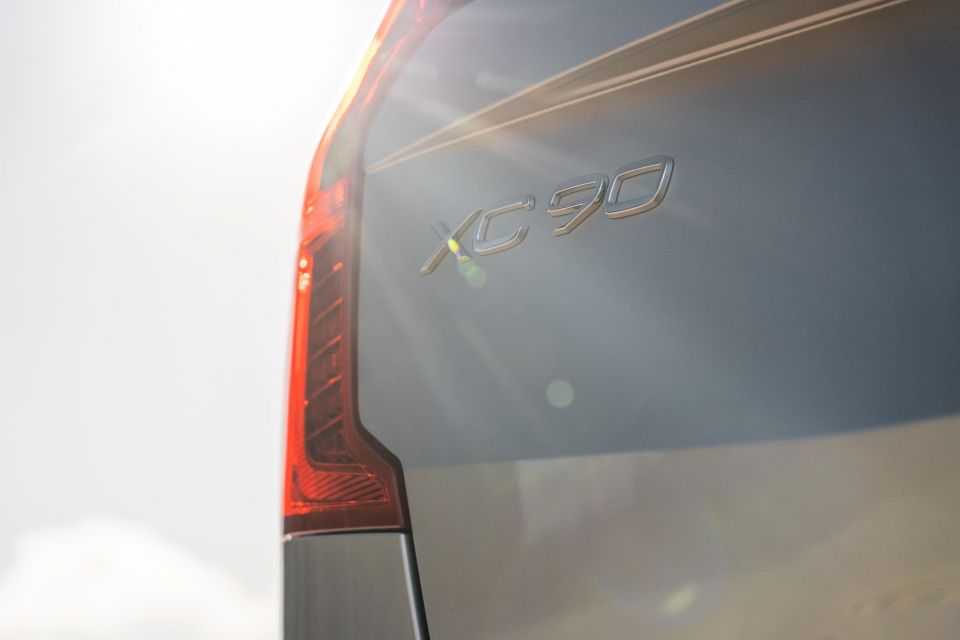
The XC90 is backed by a five-year, unlimited-kilometre warranty. Further, hybrid models are covered by an eight-year battery warranty.
Maintenance is required 12 months or 15,000km – whichever comes first.
Volvo offers pre-paid service packages across its range. For the XC90 three years of maintenance will set you back $1750, while five years is priced at $3000.
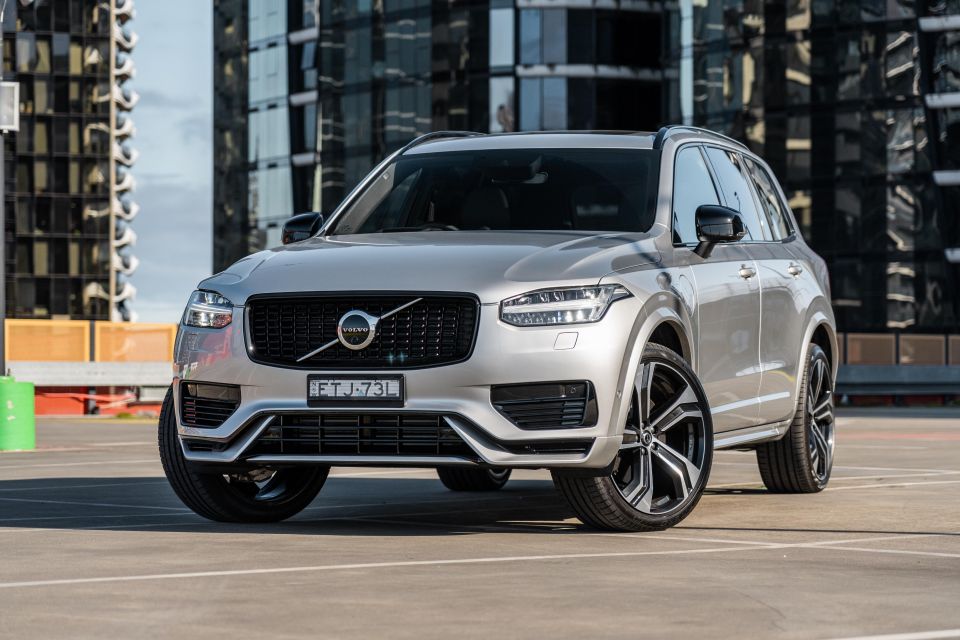
The XC90 might be getting on a bit, but it’s a charming beast of a thing.
It’s spacious and flexible inside, but still feels reasonably wieldy in the city. It’s luxurious behind the wheel, from the ultra-supportive armchairs to the pumping sound system, but also feels solid enough to handle a beating from kids.
The plug-in hybrid powertrain has been meaningfully improved for 2022/2023. The bigger battery makes for a car you drive on electric power for longer, which improves the efficiency equation for owners who can charge at home or work, and Volvo’s experience in the PHEV world shows in how smoothly it’s all tuned.
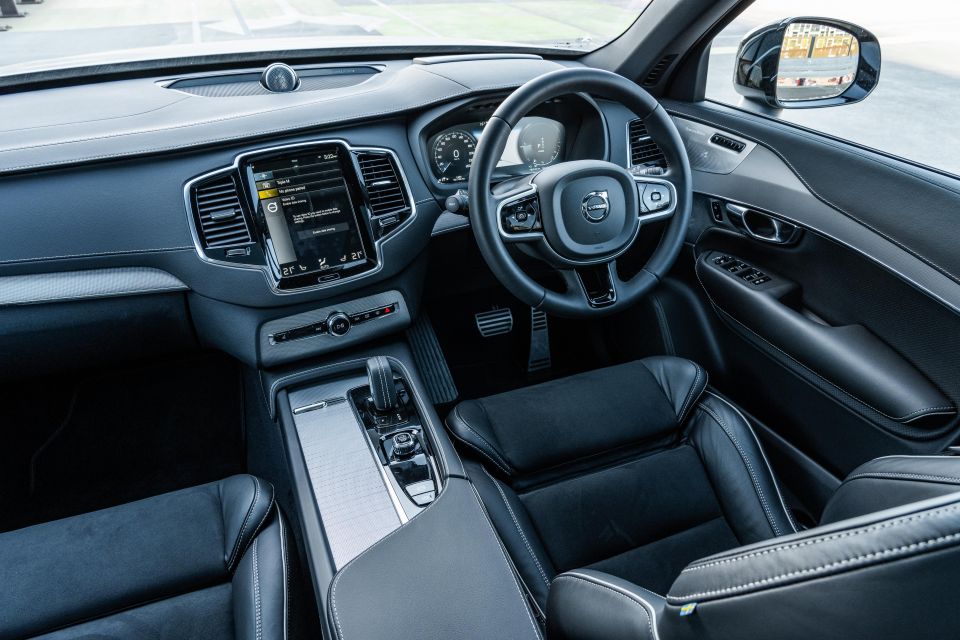
No matter how refined it is however, PHEV power won’t be for everyone.
I can understand the motive behind Volvo’s move away from diesel and, eventually, internal-combustion powertrains, but the XC90 would be lovely with a torquey, under-stressed diesel six under the bonnet.
No point getting hung up on what we can’t have, though. If you’re looking for a big family SUV, the XC90 has plenty to offer in the face of stiff, younger competition.
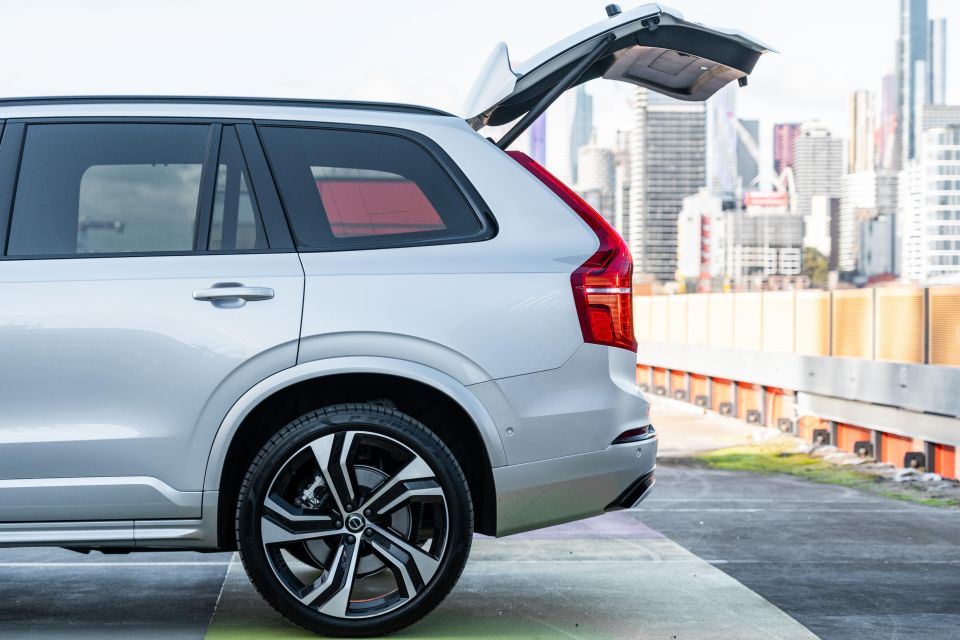
Click the images for the full gallery
MORE: Everything Volvo XC90
Where expert car reviews meet expert car buying – CarExpert gives you trusted advice, personalised service and real savings on your next new car.
Scott Collie is an automotive journalist based in Melbourne, Australia. Scott studied journalism at RMIT University and, after a lifelong obsession with everything automotive, started covering the car industry shortly afterwards. He has a passion for travel, and is an avid Melbourne Demons supporter.


James Wong
5 Days Ago


Max Davies
4 Days Ago


Josh Nevett
3 Days Ago


Josh Nevett
2 Days Ago


Paul Maric
1 Day Ago
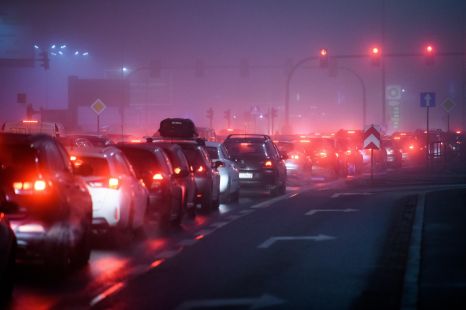

Damion Smy
17 Hours Ago